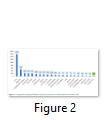Full Length Research Article
A Bibliometric Analysis of Research on Zika Virus Indexed in Web of Science
Saima Nasir1*, Jamila Ahmed2
Adv. life sci., vol. 5, no. 3, pp. 88-95, May 2018
*- Corresponding Author: Saima Nasir (Email: saimanasir2007@hotmail.com)
Authors' Affiliations
2- Allama Iqbal Open University, Pakistan
Abstract![]()
Introduction
Methods
Results
Discussion
References
Abstract
Background: The spread of Zika virus is of great concern as it is recently becoming the third global infectious disease outburst after H1N1 flu and the Ebola virus infections. Centre for Disease Control (CDC) categorized Pakistan, India, and Bangladesh as countries vulnerable to Zika Risk. Realizing health implications of this emerging epidemic, it is a dire need to build an all-inclusive view of the status of research on Zika virus disease, and a lucid picture of the research output and scientific collaborations in the field.
Methods: All the articles published globally on Zika virus during 2008-2017 and documented in Web of Science were analyzed using Microsoft Excel and Word Cloud tool. The data were extracted from all databases of the Web of Science, obtaining a total of 3384 articles for analysis.
Results: 3384 records on Zika virus research were indexed in the Web of Science database during 2008-2017. The retrieved data indicate that over the past ten years, not much research has been done on this virus and the focus shifted to research on Zika in the last three years only and the number of researches increased from just 38 in 2015 to 1962 in 2017. Pakistan has a low share in global publications on Zika with a total number of 24 publications. “Honein Margaret” is considered the most active researcher in the field, by contributing to 80 articles. Most of the published research on Zika virus is from US (47.07%).
Conclusion: When compared with other countries, the contribution of Pakistan is negligible with a global share of 0.71% on Zika virus. Serious focus on research is needed in this field realizing the severe medical, ethical, and economic implications of this emerging epidemic in Pakistan.
Keywords: Pakistan, Zika, virus, research productivity, bibliometric
Zika virus, reportedly isolated for the first time in 1947 from an ailing rhesus monkey in the Ugandan Zika Forest, is from family of flavivirus. This virus was isolated later from the same area in Aedes africanus mosquitoes [1]. Zika virus, like Dengue and Chikungunya virus, is transmitted by the bite of an infected mosquito to humans. The mosquito is more often than not of genus Aedes, mainly Aedes aegypti and Aedes albopictus. The transmission of this virus has also been reported by sexual contact and from mother to fetus [2-4].
The Zika virus disease is characterized by rash being the most prominent feature accompanied by fever, exhaustion, headache, pain in joints or muscles, and inflammation of the conjunctiva. The symptoms generally die away within two weeks with rare reports of extended persistence [5-7]. Cases of microcephalic infant births have grown reportedly in Zika virus outbreaks. Also, meningitis, transient hearing loss, low blood pressure, and genitourinary symptoms have been described in adults as clinical sequelae associated with Zika virus [8-11].
The global spread of arboviruses including Zika, spreading by bite of mosquitoes, ticks, or other arthropods, is of great concern along with other public health alerts. It is stated that after H1N1 flu and the Ebola virus infections, Zika virus is recently becoming the third global infectious disease outburst with detrimental repercussions for pregnant mothers and the unborn children [12]. Prevalence of Zika throughout Africa, Asia, and Oceania has been reported in several serosurveillance studies in humans [13-15]. Centre for Disease Control (CDC) reports that Zika is already an epidemic in the majority of the areas of Africa and Asia. The epidemic outbursts were also reported from Central and South America, the Caribbean and the Pacific Islands. CDC also categorized Pakistan, India, and Bangladesh as countries vulnerable to Zika Risk. The first case of Zika Virus was confirmed in China in February 2017 that increased to confirmation of 22 more cases by September [16,17]. From the Indian Gujarat, India confirmed three cases of Zika Virus in 2017, which take place near the limits of Sindh province of Pakistan.
These findings raise an alarm and imply that low-level transmission of Zika Virus in South-East Asia Region may lead to emergence of new cases in Pakistan, in near future. Although, the first serological traces of Zika infection go before 1983 in Pakistan, there are no reported clinical cases yet [18]. Pakistan has encountered several outbreaks of dengue and chikungunya possibly due to warm weather, lack of proper sanitation and overcrowding [19]. It has been feared that the same conditions might result in emergence of a more virulent strain of the Zika virus in Pakistan.
Bibliometric studies cover broad research communities, and attempt to explore collaborations between researchers and medical practitioners. Numerous bibliometric studies exist internationally in various medical disciplines as well as in multidisciplinary research domains [20-26]. Several studies have explored the research directions and quantum in quite a few neglected tropical and infectious diseases, such as leishmaniasis [27,28], leprosy [29,30], schistosomiasis [31,32] and Chagas disease [33].
Realizing the severe medical, ethical, and economic implications of this emerging epidemic, particularly in country like Pakistan where the resources and opportunities for early identification and possible intervention measures are deficient, a rigorous effort headed for improving knowledge, management, and prevention of Zika virus disease is necessitated. Therefore, it is a dire need to build an all-inclusive view of the status of research on Zika virus disease, and a lucid picture of the research output and scientific collaborations in the field. This will also help in the process of planning and policymaking. Perceptibly, the enhancement of the research in the area of Zika virus disease over time will direct to progress in preventing, managing and controlling mortality rates. Thus, the aim of the present study was bibliometric analysis of the scientific research on Zika virus, and help researchers understand the characteristics of research output in this particular domain and provide a reference for determining future direction and quantum of research in this regard.
The data was retrieved from Thomson Reuters Science Citation Index online database of the Web of Science (ISI-WoK) from 2008-2017 for analysis. The data were retrieved on February 21, 2018. The search option was run for time span from 2008-2017 for the topic "zika". The records obtained were refined by document types filtering them as articles, reviews or meetings. From all databases in ISI-WoK. Articles were accordingly assessed for a number of attributes including authorship, times cited, cites per document, most frequently cited articles, the year of publication, the country of origin of the article, name of journal, and document type of the article. For data analysis and presentation, Microsoft Excel and Word Cloud tool were used.
Quantification of Zika Studies
In this study, a total of 3384 records were retrieved from ISI-Web of Science database in the field of Zika over a period of ten years i.e. 2008–2017 (Figure 1). The article titled “Zika Virus Outbreak on Yap Island, Federated States of Micronesia” published in 2009 in the New England Journal Of Medicine is considered the most highly cited in Web of Science. Full characteristics of the most cited studies on Zika are presented in Table 1.
Ten Most Productive Zika Researchers Based on Number of Articles Published is given in Table 2. The data show that a total of 1817 researchers have contributed in the publication of 3384 articles, of which “Honein Margaret” is the most active researcher, who have added 80 articles in this field globally. “Benelli Giovanni" holds second position, with 79 articles. Top three Pakistani researchers contributed only 05 articles in the field (Table 3).
“Diamond Michael S” and "Jamieson Denise J" both with an h-index of 19 rank highest amongst all Zika researchers.“Honein Margaret A" with an H-index of 17 follows them and is ranked third (Table 4).
Geographical Distribution of Zika Studies
The top 20 countries in terms of Zika research output are shown in Figure 2. Most of the published research on Zika virus is from US (47.07%) and then by UK (6.38%), France (6.24%), Italy (4.91%) and Germany (4.02%). China has highest publications (7.59%) followed by India (3.99%). Pakistan has a low share of 0.71% in global publications on Zika with a total of 24 publications and is ranked 31st among the 88 countries that contributed in published research on Zika. The continent of South America has a good representation in research on Zika by Brazil with a share of 15.25%. South Africa is the top country in Africa with only 0.80% share of global research in the field. The top ten global organizations that have contributed in research on Zika are mentioned in Table 5.
Analysis of Zika Publications by Journals and Impact Factors
The retrieved data showed that researches on Zika had been published in 100 different journals during 2008–2017."PLOS NEGLECTED TROPICAL DISEASES" is the most reputed journal in the field of Zika research and consequently is at the top of this ranking with 122 papers (3.61%) published in it followed by "SCIENTIFIC REPORTS" that published 77 articles in the field. A list of ten most frequently used journals is given in Table 6." NEW ENGLAND JOURNAL OF MEDICINE" is the journal with highest impact factor (72.406) in this list. "NATURE REVIEWS DRUG DISCOVERY" and "LANCET" come next with impact factors 57 and 47.831 respectively.
Analysis of Zika Publications by Language
Language wise share of published articles over the span of ten years from 2008–2017 is given in Figure 3 with English having major share of 96.6%.
Map of Zika Research by Frequency of the Title Words in the Titles
Findings showing most frequent words are presented in Table 7.
Analysis of Keywords
The word art of Zika has been created based on key words in WoS top 50 research articles. All relevant keywords from highly cited articles were put into the Word Cloud tool. The words that appear bigger, e.g. Zika and Virus in the Figure 4, indicate the comparative frequency of these words.
Tables & Figures
The appraisal of research activities through bibliographic techniques is gaining interest in recent years, particularly owing to its consideration as an effective means to find out the performance standards of research, as well as of research institutes [34]. In the present study, global research on Zika was aptly investigated within the ten-year period (2008–2017), which showed that 3384 records were documented in the Zika field on the Web of Science database. Not much research has been carried out in Pakistan, although it is an emerging threat. China and India have contributed in the knowledge of Zika virus [17]. Our data indicate that during last decade, not much research has been done on this virus and the focus shifted to research on Zika in the last three years only and the number of researches increased from just 38 in 2015 to 1962 in 2017. Pakistan has a low share in global publications on Zika research with a total number of 24 publications, 14 publications in 2016 and 11 in 2017. Three Pakistani researchers, contributed 05 articles in the field, but are ranked very low when compared with global Zika contribution which shows the need to focus more on this field as the virus is becoming a threat to Pakistani population. More research is needed to be carried out by Pakistani scientists on local specimens.
There is no denial that the number of published papers by a researcher reflects the research productivity but more important than this is the impact of the research that can be measured by the number of citations accumulated. One such measure of the productivity and impact of a researcher is the h-index which is intended to specify the cumulative effect of research output, and the number of citations simultaneously [35]. Our results rank, “Diamond Michael S” and "Jamieson Denise J" highest amongst all Zika researchers by scoring 19 as h-index.
As evident from Figure 2, USA is far ahead of all the other countries based on research in the field of Zika. European countries including UK, France, Italy and Germany are also active regarding the studies on Zika. The research on Zika in Asia is led by China followed by India while Pakistan has a low share in global publications on Zika [36]. One probable reason for Brazil toping South American countries by having a high research output is because of widespread outbreaks of Zika fever there [37].
The findings reflected that studies on Zika had been published in different languages over the span of ten years. The major share of articles is published in English (96.6%) which was expected as English is the language which most scientists prefer to use for their research articles writing [38]. Spanish is the second most used language by Zika researchers (2.45%) although the share is quite low when compared with English.
The occurrence of the words in the titles of the highly cited papers in the WoS on Zika research is reflective of a general and conceptual representation of the content of these studies. The present analysis show that the most Zika research has been focused on Zika virus infection and transmission, and to a lesser extent on diseases caused in infants [14].
The present study is intended to perform a bibliometric analysis of research done in the field of Zika over last ten years. Zika Virus, as a largely neglected disease, through recent outbreaks has created an alarming situation for international health community and has been pronounced a “Global Emergency” by the World Health Organization. Keeping in consideration the tendency to infect huge populace with rigorous consequences in various cases, it becomes a dire need to create a wide-ranging view of the status of research being done on Zika virus, and to present a clear picture of the research output and scientific cooperation in the domain. This will not only provide a referral point for future researches but will also help in any planning and policy-making regarding prevention and control of Zika virus. This is a much neglected field in Pakistan and more research is needed to be done in this field and scientists should be encouraged to publish their research in peer reviewed journals.
The authors declare that there is no conflict of interest regarding the publication of this paper.
- Dick G, Kitchen S, Haddow A. Zika virus (I). Isolations and serological specificity. Transactions of the Royal Society of Tropical Medicine and Hygiene, (1952); 46(5): 509-520.
- Calvet G, Aguiar RS, Melo AS, Sampaio SA, De Filippis I, et al. Detection and sequencing of Zika virus from amniotic fluid of fetuses with microcephaly in Brazil: a case study. The Lancet infectious diseases, (2016); 16(6): 653-660.
- Foy BD, Kobylinski KC, Foy JLC, Blitvich BJ, da Rosa AT, et al. Probable non–vector-borne transmission of Zika virus, Colorado, USA. Emerging infectious diseases, (2011); 17(5): 880.
- Hills SL. Transmission of Zika virus through sexual contact with travelers to areas of ongoing transmission—continental United States, 2016. MMWR Morbidity and mortality weekly report, (2016); 65(8): 215-216.
- Duffy MR, Chen T-H, Hancock WT, Powers AM, Kool JL, et al. Zika virus outbreak on Yap Island, federated states of Micronesia. New England Journal of Medicine, (2009); 360(24): 2536-2543.
- Ioos S, Mallet H-P, Goffart IL, Gauthier V, Cardoso T, et al. Current Zika virus epidemiology and recent epidemics. Medecine et maladies infectieuses, (2014); 44(7): 302-307.
- Dupont-Rouzeyrol M, O’Connor O, Calvez E, Daures M, John M, et al. Co-infection with Zika and dengue viruses in 2 patients, New Caledonia, 2014. Emerging infectious diseases, (2015); 21(2): 381.
- Fontes CAP, dos Santos AASD, Marchiori E. Magnetic resonance imaging findings in Guillain-Barré syndrome caused by Zika virus infection. Neuroradiology, (2016); 58(8): 837-838.
- Picone O, Vauloup-Fellous C, D’Ortenzio E, Huissoud C, Carles G, et al. Infection par le virus Zika chez la femme enceinte. La Revue Sage-Femme, (2016); 15(4): 183-191.
- Cavalheiro S, Lopez A, Serra S, Da Cunha A, da Costa MDS, et al. Microcephaly and Zika virus: neonatal neuroradiological aspects. Child's Nervous System, (2016); 32(6): 1057-1060.
- Dyer O. US agency says Zika virus causes microcephaly. (2016); 353i2167.
- Galán-Huerta K, Rivas-Estilla A, Martinez-Landeros E, Arellanos-Soto D, Ramos-Jiménez J. The Zika virus disease: An overview. Medicina universitaria, (2016); 18(71): 115-124.
- Macnamara F. Zika virus: a report on three cases of human infection during an epidemic of jaundice in Nigeria. Transactions of the Royal Society of Tropical Medicine and Hygiene, (1954); 48(2): 139-145.
- Korhonen EM, Huhtamo E, Smura T, Kallio-Kokko H, Raassina M, et al. Zika virus infection in a traveller returning from the Maldives, June 2015. Eurosurveillance, (2016); 21(2): 30107.
- Baba S, Fagbami A, Ojeh C. Preliminary studies on the use of solid-phase immunosorbent techniques for the rapid detection of Wesselsbron virus (WSLV) IgM by haemagglutination-inhibition. Comparative immunology, microbiology and infectious diseases, (1999); 22(1): 71-79.
- Zhong Y-B, Liu X-Q, Deng Y-C, Xu P-H, Zhong G-R, et al. First case of laboratory-confirmed Zika virus infection imported into China. Chinese Medical Journal, (2016); 129(16): 2013.
- Xiang B, Gao P, Kang Y, Ren T. Importation of Zika virus in China: a significant risk in southern China. Journal of Infection, (2017); 74(3): 328-330.
- Darwish MA, Hoogstraal H, Roberts TJ, Ahmed IP, Omar F. A sero-epidemiological survey for certain arboviruses (Togaviridae) in Pakistan. Transactions of the Royal Society of Tropical Medicine and Hygiene, (1983); 77(4): 442-445.
- Afzal MF, Naqvi SQ, Sultan MA, Hanif A. Chikungunya fever among children presenting with nonspecific febrile illness during an epidemic of dengue fever in Lahore, Pakistan. Merit Research Journal of Medicine and Medical Sciences, (2015); 3(3): 69-73.
- Ramos J, Padilla S, Masia M, Gutierrez F. A bibliometric analysis of tuberculosis research indexed in PubMed, 1997–2006. The International Journal of Tuberculosis and Lung Disease, (2008); 12(12): 1461-1468.
- Vioque J, Ramos J, Navarrete‐Muñoz E, García‐de‐la‐Hera M. A bibliometric study of scientific literature on obesity research in PubMed (1988–2007). Obesity Reviews, (2010); 11(8): 603-611.
- Zheng H-c, Yan L, Cui L, Guan Y-f, Takano Y. Mapping the history and current situation of research on John Cunningham virus–a bibliometric analysis. BMC infectious diseases, (2009); 9(1): 28.
- Keiser J, Utzinger J, Tanner M, Singer BH. Representation of authors and editors from countries with different human development indexes in the leading literature on tropical medicine: survey of current evidence. BMJ, (2004); 328(7450): 1229-1232.
- Falagas ME, Karavasiou AI, Bliziotis IA. A bibliometric analysis of global trends of research productivity in tropical medicine. Acta tropica, (2006); 99(2-3): 155-159.
- Glover SW, Bowen SL. Bibliometric analysis of research published in Tropical Medicine and International Health 1996–2003. Tropical Medicine & International Health, (2004); 9(12): 1327-1330.
- Keiser J, Utzinger J. Trends in the core literature on tropical medicine: a bibliometric analysis from 1952-2002. Scientometrics, (2005); 62(3): 351-365.
- Huamaní C, Romaní F, González-Alcaide G, Mejia MO, Ramos JM, et al. South American collaboration in scientific publications on leishmaniasis: Bibliometric analysis in SCOPUS (2000-2011). Revista do Instituto de Medicina Tropical de São Paulo, (2014); 56(5): 381-390.
- Soosaraei M, Khasseh AA, Fakhar M, Hezarjaribi HZ. A decade bibliometric analysis of global research on leishmaniasis in Web of Science database. Annals of Medicine and Surgery, (2018); 2630-37.
- Khasseh AA, Soosaraei M, Fakhar M. Cluster Analysis and Mapping of Iranian Researchers in the Field of Parasitology: With an Emphasis on the Co-authoreship Indicators and H Index. Iranian Journal of Medical Microbiology, (2016); 10(2): 63-74.
- Khasseh AA, Fakhar M, Soosaraei M, Sadeghi S. Present situation of scientific productions of Iranian researchers in parasitology domain in ISI databases. Iranian Journal of Medical Microbiology, (2011); 5(1): 53-65.
- Morel CM, Serruya SJ, Penna GO, Guimarães R. Co-authorship network analysis: a powerful tool for strategic planning of research, development and capacity building programs on neglected diseases. PLoS neglected tropical diseases, (2009); 3(8): e501.
- Costa JL, Schmitt CR, Piegas M, Peixinho A, Schmidt A, et al. Analysis of scientific information published in Brazil in 5 years on Chagas disease, schistosomiasis, malaria, leishmaniasis and filariasis. Educacion medica y salud, (1985); 19(2): 209-226.
- Handman E. Leishmaniasis: current status of vaccine development. Clinical microbiology reviews, (2001); 14(2): 229-243.
- Uzun A. A scientometric profile of social sciences research in Turkey. The International Information & Library Review, (1998); 30(3): 169-184.
- Bornmann L, Daniel HD. The state of h index research. Is the h index the ideal way to measure research performance? EMBO Reports, 2009;10(1): 2-6.
- Ai JW, Zhang Y, Zhang W. Zika virus outbreak: “a perfect storm.” Emerging Microbes & Infections, (2016); 5(3), e21.
- Lowe R, Barcellos C, Brasil P, et al. The Zika Virus Epidemic in Brazil: From Discovery to Future Implications. International Journal of Environmental Research and Public Health, (2018); 15(1): 96-114
- Drubin DG, Kellogg DR. English as the universal language of science: opportunities and challenges. Molecular Biology of the Cell, (2012) ;23(8):1399.
This work is licensed under a Creative Commons Attribution-Non Commercial 4.0 International License. To read the copy of this license please visit: https://creativecommons.org/licenses/by-nc/4.0















